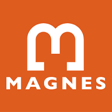Digital Projects
Jewish Digital Narratives
The Jewish Digital Narratives of The Magnes Collection of Jewish Art and Life explore the networks of Jewish life in California and beyond.
The more we look at Jewish history and culture, the more we hear the resonance of the ancient term, haggadah.
Narration is at the heart of the Jewish experience, and the holdings of the Magnes, which span archive, library and museum collections, tell many stories from the four corners of the world. To us, the meaning of a narrative approach to Jewish cultural history lies in the particular, in the intricacies of its many interweaving cultures, but it also represents a paradigm that can often be applied to other cultures and interactions.
The Jewish Digital Narratives make a creative (and at times unintended) use of current technologies and social networking tools to organize, showcase and share what the Magnes has collected in almost half a century. How the objects, texts and documents in our collections reached Northern California is in itself a captivating story, which has only been partially told by the founders of the Magnes.
Digital images generated by the Magnes, or collected through programs like the Memory Lab, are first organized in a narrative form, on the basis of a detailed storyboard. The results are presented on the Magnes website in an interactive learning environment created with the innovative software, MemoryMiner. The narratives are also uploaded to popular networks like Flickr, where users can comment, provide feedback, tag images and circulate information. Research and collection information is made available through links to the Magnes Collections Online, our integrated Archive-Library-Museum (ALM) collections database.
The Jewish Digital Narratives are the result of meticulous research by our curatorial staff, by guest curators and scholars, and by an energetic pool of interns, for whom our collection represents an invaluable training ground.
– Francesco Spagnolo, PhD, Curator of The Magnes Collection of Jewish Art and Life
